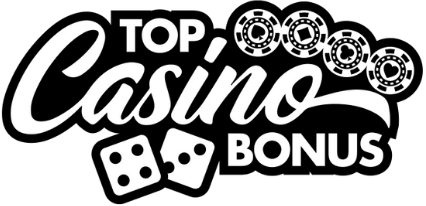Bingo online: how to play and different game types
Most newcomers think online bingo is just a digital version of that community hall game with daubers and plastic chairs. But if you treat it that way, you’re leaving a whole lot of nuance, and potential enjoyment, on the table. See, online bingo isn’t just about calling out numbers and crossing your fingers. It’s a game of timing, bankroll management, and understanding the mechanics behind varied game types. I’ve seen plenty of players stroll in with more bravado than brains, only for the system to chew them up and spit them out before they’ve even shouted “Bingo!” once.
Table of contents
Understanding how online bingo works
At its core, the game runs on a random number generator (RNG). Forget about that old guy in the back turning a cage with numbered balls, online, it’s all silicon and code. Still, that doesn’t mean there’s no room for strategy.
Players typically buy one or more cards, each filled with a unique grid of numbers. As the RNG produces numbers, your cards auto-mark them. When you hit the required pattern, could be a straight line, four corners, or even a full house, you win. But here’s the catch: it’s not always about shouting first. Some games play out across multiple rounds, or pool players into sideline jackpots.
Spotting the rookie mistake
Too many folks buy a dozen cards thinking quantity beats quality. They don’t check the room size, jackpot rules, or ticket costs. That’s like betting max on slot machines without knowing the payout table. Never ends well. You’ve got to assess every game’s framework. Look for number ranges, draw speed, and bonus features. That’s your real edge.
Different types of online bingo games
Online bingo isn’t just one flavor. It’s a full ice cream shop with exotic options. The type of game you choose can drastically affect strategy, speed, and winnings. Let’s break down the variants every serious player should master.
75-ball bingo: The American classic
This is the bread and butter in most online spaces, especially for US platforms. The card is a 5×5 grid with 24 numbers and one free center square. Patterns range from simple lines to complex shapes like diamonds or letters. Winning isn’t always obvious; sometimes it rewards creativity over consistency.
90-ball bingo: The UK standard
The card here has three rows and nine columns, each row containing 5 numbers. You’ve got three chances to win: one line, two lines, and full house. It spreads excitement over more intervals. And believe me, the rhythm of this format? It’s got real heartbeat to it, steady yet electric.
30-ball bingo: The speed demon
You want fast? This is where you go. Only 30 balls, 3×3 cards, and razor-quick rounds. It’s ideal for mobile players or those looking to scratch that instant gratification itch. Just be aware, blink, and you’ve burned your bankroll if you’re not paying attention.
80-ball bingo: The hybrid approach
Think of this as the bridge between American and British bingo. The 4×4 card introduces color-coded columns, adding a visual twist. Games vary wildly in win conditions. It rewards players who can think laterally and adapt quickly, no room for one-trick ponies here.
The bingo lobby: Where smart play begins
I’ve always said: the game doesn’t start when the numbers roll. It starts in the lobby. Every room tells a story. Check the number of players, available ticket price tiers, jackpot sizes, and even the chat mods. You’d be surprised how often they hint at upcoming patterns or call out cold numbers.
For example, some rooms have progressive jackpots that only hit if you win within a certain number of calls. Others might be themed around high-frequency draws. Choose a room recklessly, and you’re like a sailor steering blind into a storm.
Chat-based bonuses and side games
Some platforms throw in chat-based trivia, mini-games, or spot-the-number races. Now these don’t always pay big, but they’re ripe for easy wins. It’s like hunting small game while waiting for the big one. Keeps the bankroll breathing.
Integrating bingo with broader casino knowledge
Bingo isn’t floating in a vacuum. It shares strategic DNA with other games, and knowing those links can supercharge your approach. Take keno for example. Both rely heavily on RNGs, but keno gives more control over number selection. Studying one improves your pattern recognition in the other.
Then there’s video poker. While this might sound out of left field, learning optimal card retention there teaches patience and reading hands, skills vital in long-haul bingo rooms. And surprisingly, even binary-betting games like roulette instill a solid sense of bankroll pacing, especially when pacing your entry-point for bingo cards of varying cost.
Feel like upping the ante? Jump over to strategic dice games like sic bo, where calculating odds on unlikely outcomes gives mental tools to assess rare pattern wins in bingo. It’s all connected, you just need the toolkit to see it.
Common pitfalls and hard-won lessons
Too many players chase jackpots without understanding odds. I’ve seen entire bingo rooms full of folks buying maximum cards with reckless abandon, hoping for lightning to strike. It’s not about how many tickets you hold; it’s about knowing when to hold, when to fold, and when to sit out entirely.
I once watched a veteran player win three games in a row by playing just two cards, but in low-traffic rooms at off-peak hours. That’s the kind of wisdom no tutorial will hand you. You learn that watching patterns, observing crowds, and understanding the room beats raw luck every time.
Advanced tip: pattern hunting
See, patterns aren’t truly random. Not over thousands of games. While you can’t game the RNG directly, players who track which patterns are drawn and when they’re likely to reappear sit on valuable insight. Bingo platforms often cycle through pattern pools. Paying attention separates gamblers from strategists.
The soul of the game
Online bingo, beneath its friendly gloss, is a shark tank in disguise. The real players aren’t pounding the lobby with a dozen auto-dabbers. They’re watching. Calculating. Listening. It’s a patient person’s game, dressed up in speed and sparkles. Sure, the digital format makes it look simple, but simplicity hides depth.
Want to master bingo? Stop chasing the jackpot like a moth to a flame. Start learning the mechanics, read the room, and blend intuition with experience. That’s where the game lives, not in the numbers called, but in how you play them.





0 Comments